Global Trends in Smart Transportation & Mobility Forum
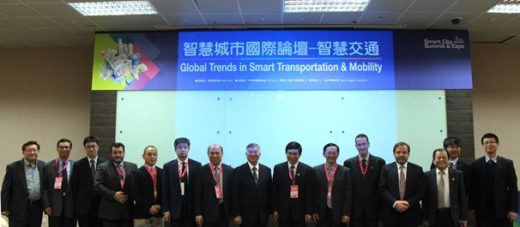
Global Trends in Smart Transportation & Mobility Forum
Photo gallery
Speakers' slides
On 22 March 2016 the Global Trends in Smart Transportation & Mobility Forum was held. It was one of the largest forums held as part of the four-day 2016 Smart City Summit & Expo from 22-25 March, covering topics including smart transportation, buildings, healthcare and retail. The forum, jointly organized by Intelligent Transportation Society (ITS) Taiwan, Institute for Information Industry (III), the ECCT's Low Carbon Initiative (LCI) and the Taipei Computer Association (TCA), featured two sessions of presentations by industry experts on subjects relating to smart transportation and mobility trends. The forum began with opening remarks by guests of honour Kent KT Wang, President of ITS Taiwan; Shen Jong-chin, Administrative Deputy Minister of the Ministry of Economic Affairs (MoEA); Wu Ruey-beei, President of III and Giuseppe Izzo, Vice Chairman of the ECCT.
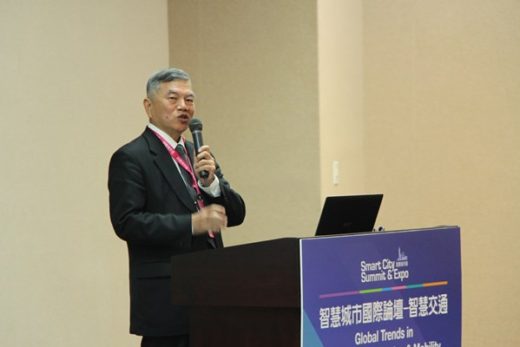
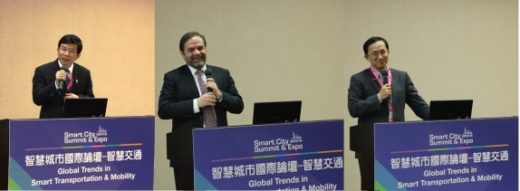
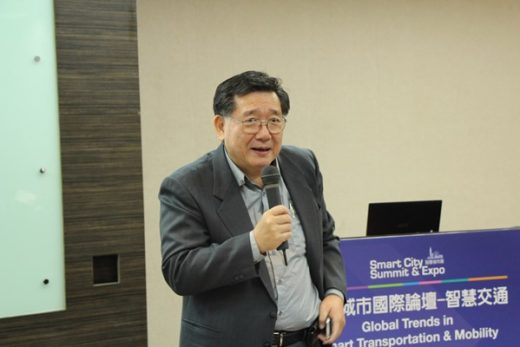
Topic: Sustainable development of smart transport infrastructure
Speaker: Liang Yue-lin, Principal Transport Consultant, Siemens AG & Head, Transport Consulting, Siemens Ltd China
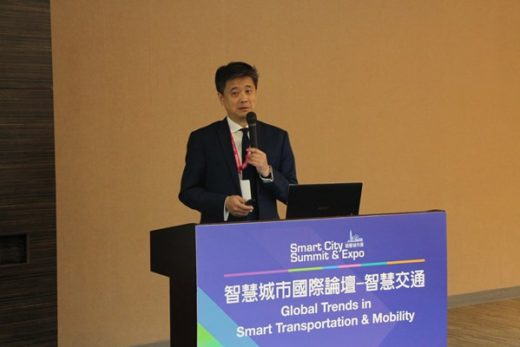
In his presentation, Liang discussed the rationale and vision behind Siemens' development of sustainable transport solutions and how it is helping corporate clients and governments to roll-out sustainable transport solutions.
The major challenges for transport are delays and pollution. According to Liang, the economic cost of delays due to traffic congestion are high – shaving off as much as 3.6% of Beijing's GDP, for example. Meanwhile, pollution, mainly attributed to transportation, results in 200 days a year of serious pollution levels in Beijing.
Siemens' transport solutions seek to be holistic and comprehensive and address all transport-related issues such as integrating infrastructure, optimizing organization, land conservation, improving efficiency, lowering costs, introducing intelligent management and making use of clean, renewable energy sources. They also take into account costs over the entire lifecycle of systems, including procurement, operations, maintenance and eventual recycling (according to Liang, 98% of Siemens' systems can be recycled).
The first major industrial evolution of transport is regarded as having started with electrification (stage 1.0). We are now in stage 3, whereby we have a level of automation and intelligent systems. The next phase (4.0) will see smart systems that are fully automated, highly integrated, draw on big data and cloud-computing and can proactively predict and solve problems without human intervention. Smart systems have to meet all stakeholder's needs, including government agencies, users and companies (which means that there must be viable business models).
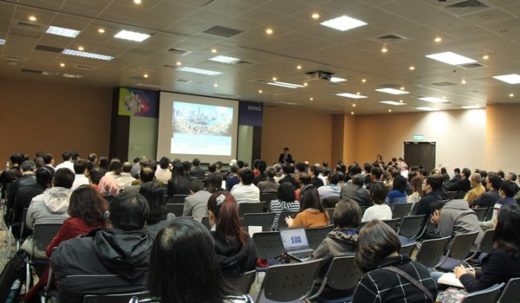
Topic: Mitsubishi Heavy Industries: Introduction of ITS Business and EV demonstration project
Speaker: Takashi Siko, Manager, MHI
Siko introduced his company's solutions, which include road pricing/toll collection smart parking, park and ride, car sharing and bus management schemes. The company develops toll systems in Singapore and Malaysia and has been involved in smart city projects in several cities.
In addition, he introduced a car sharing demonstration system his company has run in the city of Kobe in Japan. The project aims to work out supply and demand for car sharing in parts of the city not well-served by public transport and to predict future activity and minimize future parking problems. The company is responsible for the collection and analysis of data.
Users only need to register and swipe a card to gain access to a vehicle. There are different types of cars, some for single passengers and some for two passengers. During the demonstration period, users get 30 minutes of free use. There are 20 cars in operation and the frequency of use has been rising steadily. The company has collected a lot of data showing where and when cars are used, which will allow it to implement a more complete system. The demonstration period, which has been funded by the government, ends soon. Whether or not the scheme can be extended depends on creating a viable business model.
Topic: Is ITS safe?
Speaker: Zhao Bin, General Manager, Industrial Services, Greater China, TÜV Rheinland
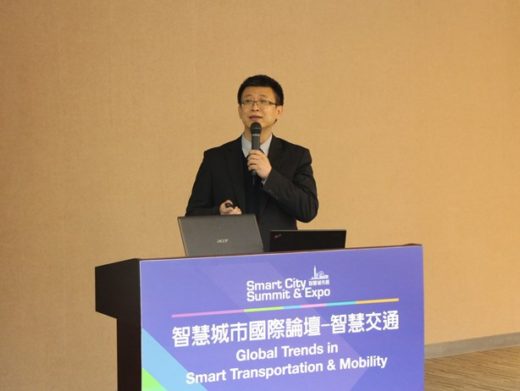
A recent case of a connected car being hijacked by hackers in the United States has raised security concerns about connected vehicles. In the much-studied case, hackers used a technique that the security industry calls a zero-day exploit that can target Jeep Cherokees and give the attacker wireless control via the internet. In this case hackers were able to send commands through the Jeep's entertainment system to its dashboard functions, steering, brakes and transmission, all from a laptop computer that could have been on the other side of the country. This case clearly shows that as long as a vehicle is connected to the internet, it is vulnerable.
Zhao introduced several global standards that have been developed or are being developed to address security issues. To achieve functional safety, the risk of hazards caused by electrical and electronic systems malfunctioning must be removed. Functional safety standards include IEC 61508 for general industry and ISO 26262 for road vehicles. ISO 26262 has been developed to enable the design of electronic systems that can prevent dangerous failures or control them if they occur. However the limitation of ISO 26262 is that it views hazards and causes only to a single vehicle as a result of a malfunction of equipment. Hazards caused by malicious actions, such as those of a hacker, are not covered. Safety-critical communications with external entities are also not covered. Meanwhile ISO 61508 assumes misuse, such as a reckless driver, but not malicious intention, such as a hacker.
What the above indicates is that standards are not yet sufficient for connected vehicles and there are many aspects of security and privacy in systems that have to be resolved before connected vehicles become safe and secure.
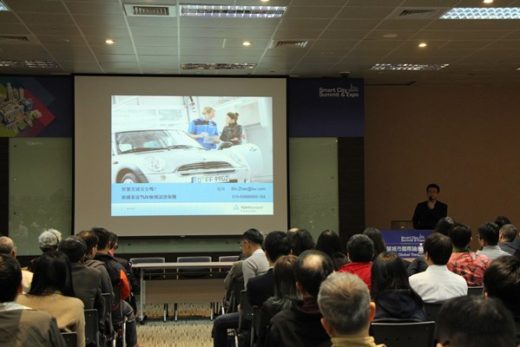
Topic: Autonomous vehicles complementing existing transit
Speaker: Robbert Lohmann, Chief Operations Officer, 2getthere
2getthere has been involved in autonomous vehicles since 1997. Autonomous vehicles made by company play an important role in complementing existing transport. Their automated people mover systems are guided transit modes with fully automated (driverless) operation, featuring computer-controlled vehicles that operate on a dedicated network of guideways. Vehicles follow the routes by continuously calculating their position relative to their origin. The position is calibrated using external reference points. These reference points are simple, passive magnets embedded in the road surface. 2getthere's vehicles use virtual routes, defined in software. The distance is measured by counting the number of wheel revolutions, while direction of travel is measured via the steering angle and the information from a gyro. The main benefit of the Free Ranging On Grid navigation technology is that physical guidance (such as rail or cable) is avoided, considerably reducing the infrastructure costs of the system. The technology is the most robust navigation technology as it avoids having to depend on line-of-sight to ensure its position on the track. The systems have proven to be safe and reliable.
The company's first vehicles resembled small buses and were used to transport people around Schiphol airport in Amsterdam, The Netherlands. The first models were not really designed for comfort. Subsequent generations have seen great improvements in terms of performance, design and comfort. The second generation of vehicles, introduced in 2006, could carry up to 24 passengers.
Vehicles are capable of operating in their own dedicated lanes or with other traffic as long as traffic conditions follow rules and are predictable. All vehicles are electric and some vehicles are taken out of operation for recharging in off-peak hours while they all operate during rush hours. Vehicles are very efficient and have received very favourable feedback from customers. They are also profitable for the operators.
The company's customers in Masdar City in Abu Dhabi, wanted a different vehicle design that is smaller and more like a car and carries up to four people. In that city residents park their own cars outside the city and use the autonomous vehicles to travel within the city. The pick-up point looks very much like a taxi rank, although operating with much greater precision. The vehicles follow exactly the same route and arrive at intervals of a few minutes. They are extremely reliable, with availability of over 99%. They have been even more popular than predicted. Originally operators expected one or two people to share each vehicle but average occupancy has been between three and four.
The company is now working on its next generation of vehicles which has a more iconic design, is bidirectional and symmetrical. Model can be customized to have 8-12 seats (more or less depending on how much standing room is required) and can be customized for luxury seating and features.
Session 2
Moderator: YC Yang, Chairperson, Overseas Affairs Committee, ITS Taiwan
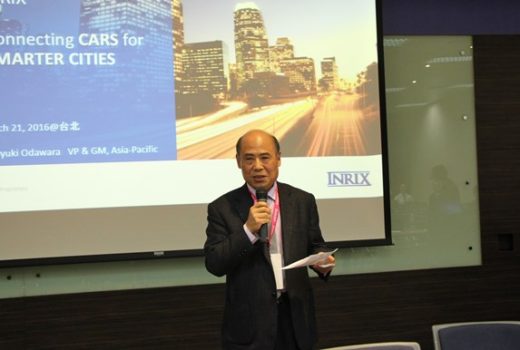
Topic: Connecting cars for smarter cities
Speaker: Takayuki Odawara, Vice President & General Manager, INRIX, Asia-Pacific
INRIX was founded 11 years ago in Seattle, Washington in the United States. The company collects and analyses static as well as dynamic traffic data from cars and mobile devices and offers dynamic traffic information in 45 countries and many cities, including Beijing and Singapore. It plans to start operating in Taiwan in about six months' time. Several major carmakers as well as 60 government agencies around the world are using the company's data and services.
According to Odawara, 30% of urban traffic is caused by drivers searching for parking while 25% of all accidents in the US and 30% in Europe are caused by poor weather conditions. By collecting and analyzing data from numerous road users, the company is able to send advance warnings to drivers and authorities about traffic, damaged roads as well as weather conditions such as black ice or poor visibility ahead.
Topic: Smart mobility and customer experiences
Speaker: John Lin, Vice President, Ford Lio Ho Motor
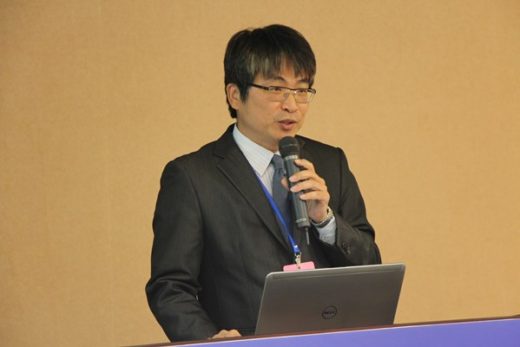
According to Lin, for residents in the greater Beijing area, the average daily commute is five hours and 22% of emissions come from transport. Given the growing problem of traffic congestion, up to 39% of Americans would rather take a form of transport that does not involve them driving, so that that they would be able to multitask while travelling.
According to Lin, Ford is changing its focus from making vehicles to providing transport. In other words, the company is becoming an automotive and mobility company. There are five main areas of innovation:
connectivity, mobility, autonomous vehicles, customer experience and data analytics.
Ford's Sync system already has millions of connected cars. In-car systems are becoming increasingly sophisticated, safer and user-friendly. Since looking at screens, searching for buttons and having to process too many steps is distracting to drivers and therefore dangerous, a lot more voice-operated controls are now available.
Using a video demonstration, Lin showed how voice instructions can be used to send messages and perform several other functions that used to require several steps and having to select and push many buttons.
Technology to make communication between connected cars continues to improve. Lin demonstrated how connected vehicles can improve safety by signaling to all other vehicles in the immediate vicinity if it stops suddenly.
Ford is working with car hailing and car sharing companies in Europe and North America. In terms of technology, the shift to semi-autonomous vehicles is already underway with driver assistance features in many of its models. In terms of big data, Lin noted that the amount of data that can be collected from connected vehicles is enormous and will require great improvements in processing power and analytical tools to realise its full potential.
Topic: Innovation in ITS
Speaker: Colin Toh, Head of ICT Infrastructure for Transportation, Ericsson
Toh shared several cases of intelligent transportation. He noted that Ericsson is no longer just a telecom company. It is moving into other areas such as media, utilities, public safety and transportation. All of these focus areas were chosen because they are related to creating smart cities. To be sustainable, cities must be safe, efficient, adaptable to natural disasters and economically viable. Innovation in ICT can resolve many of a city's problems.
As we move into the age of autonomous cars, infotainment will become increasingly important. This is why the company is working on finding the best way to provide seamless high quality video while on the move.
The company has also worked with a university in the Netherlands to develop a solar-powered car, which competed in and won the recent solar car race in Australia. Ericsson provided a solar navigator for the car. Given that the car generates more power than it uses, it is actually energy positive, which means it can feed power into the electric grid when it is not in use. Toh also introduced a bus stop with embedded technology, for example to provide Wi-Fi.
Ericsson is cooperating with Volvo, which has 500,000 cars connected to its vehicle cloud. The company's traffic cloud connects road vehicles with authorities to give them accurate traffic flow information to allow them to make the right decisions. It was developed in Germany together with car makers. Privacy concerns have to be taken into consideration when collecting and analyzing data. Data has to be anonymized.
Looking at telecom industry trends, the next generation (5G) will be 10 or 100 times faster than 4G and latency will be lower. 5G will be used not just by consumers but by a number of new users in industry such as those involved in remote health care and autonomous cars. The company's technology was also used when working with Scania to reduce the distance between its trucks, driving in platoon formation. By reducing the distance and drag, it was able to reduce fuel consumption and thereby save on operating costs and cut emissions.
Topic: New era of connected cars leading to smarter transport in cities
Speaker: Mike Lee, Executive Vice President, Enterprise & Carrier Business Unit, FarEastone
Besides its business as an mobile telecom operator, the company is experimenting with collecting data, particularly data related to traffic congestion, and looking at ways to make use of data collected from its users by drivers, traffic authorities and city planners. The next stage is to create Apps that can collect data automatically as well as allow users to input data.
Topic: Innovative last mile transport to revolutionise mobility
Speaker: Adriano Alessandrini, Associate Professor, University of Florence
According to Alessandrini, the real transport problem is the last mile. Most people live on the periphery of cities. When you have to cross a large city, using a bicycle is not convenient or efficient. Many cities have already taken measures to reduce the number of vehicles in the centre of cities and now much of the pollution and congestion is on the peripheries of cities. While many city residents in major cities do not own vehicle, 80% of people living in suburbs own cars.
Ride sharing in the last mile could remove up to three quarters of cars from the road. If the process of offering, finding and sharing a ride is done on just one App it would also be extremely efficient and cost-effective.
On the subject of why the adoption of electric vehicles has been slow, Alessandrini believes the main problem is range anxiety, which he believes will be solved by having enough fast-charging battery stations in place.
Topic: Gogoro's solution for smart city transport
Speaker: Grace Lei, Chief Operating Officer, Gogoro
In response to the previous speaker, Lei said that Gogoro has solved the problem of range of anxiety as well as pollution with its smart scooter solution. Gogoro's business model of battery renting and swapping allows its customers to easily locate a battery swapping station and swap depleted batteries for fully-charged batteries in just six seconds. Because there are already 174 battery swapping stations in northern Taiwan, the range anxiety problem has been addressed for its customers.
Information on Gogoro scooter batteries are collected and monitored in the cloud and mobile phones. There are 30 sensors in each scooter and 25 sensors in each battery. Information is refreshed 10 times per second and sent to the cloud. Information on the status of each vehicle is synchronized every 10 minutes. A phone App displays how much energy left as well as other issues with the scooter, such as if a tail light is broken or there is some other problem. It therefore resolves safety as well as power issues.
In addition, the system, by monitoring the location of vehicles, has virtually eliminated the problem of theft. Of the 5,000 scooters sold in Taiwan so far, only one has been stolen and, in that case, only because the owner had forgotten to connect his smart phone to the scooter. If he had done so, it would have been possible to track and locate the scooter. Lei noted that the company has been invited by the Amsterdam city government to explore setting up a system in that city.
